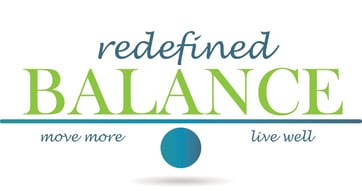In my last post about our launch of Balance Redefined, I wrote about the importance of building a group fitness calendar that includes stand-alone balance classes. Now I want to address how your community can move beyond the classes on the calendar to build a wrap-around fall prevention program.

In truth, if you want to cultivate a robust balance program, you'll have to get more people than just your fitness center manager to the table. Here's how we make that happen for our clients:
[Related Content: How NIFS fitness managers spend their time]
- Partnerships: Therapy, home health and nursing staff are invited to observe a balance class to aid in resident referrals for those who could benefit. Many of the therapy teams we partner with will provide patients with a handout of exercises to continue upon discharge from their services with additional instructions to participate in the balance class. Our staff are involved in the discharge plan and participate in a hand off of a resident from their therapy regimen to a preventive program in the fitness center.
- Assessments: Using the Fullerton Advance Balance Test protocols in conjunction with the Senior Fitness Test, we assess how a resident’s vestibular, somatosensory, and/or visual senses impact their balance. Based on the results, we prescribe specific exercises to improve specific areas of weakness. We believe strongly that working with residents to identify the underlying cause of a balance deficiency opens the door to further educating and empowering the individual on a path to improved well-being both emotionally and physically.
- Education: Empowering residents through education and resources on fall prevention is key to improving confidence and helping residents identify the services best suited to their needs. NIFS offers an array of educational programs ranging from fall prevention lectures partnered with the therapy department, to seminars on coaching residents how to fall safely or get up from the ground, as well as signs/symptoms to look for with concussions and the long-term impact one can have on a senior’s stability.
- Balance Fairs: Think Health Fair with a creative twist to showcase everything balance and fall prevention related! This collaborative effort taps into internal and external partners to communicate services and resources for residents. Examples of vendors for the fair include an assistive device tune-up clinic from rehab, a balance assessments from the fitness staff, a "balance your plate" booth from dining services, a local podiatry practice educating on proper footwear, the community pharmacist speaking about medication side effects, internal clinic/health services offering blood pressure screenings, a local chiropractor providing posture checks, and more.
This may be a unique approach for your community, and if you don't have adequate fitness staff in place, it could seem like a heavy lift. If you need to rally your staff around the concept, forward on this blog to start the conversation, or download our quick read on the importance of balance training. With services ranging from fun balance circuits to balance sessions using the Wii Fit or Biodex Balance System to aquatic balance programs, prospects will quickly see how much more your community offers.
Based on the consulting work I've done with communities across the US, this is a comprehensive, prevention-based approach that helps our clients stand out from their competition. If you want to find out more about how to bring NIFS and Balance Redefined to your residents, connect with us.

